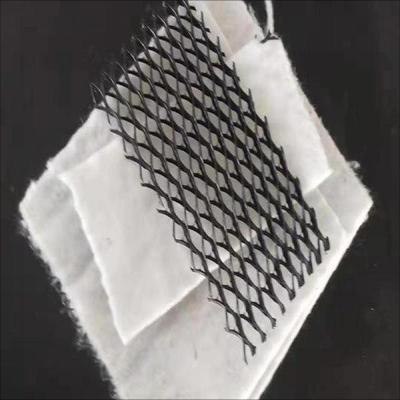1. Material composition and structural characteristics
1、Geotechnical drainage network:
Geotechnical drainage network is made of polypropylene ( PP) Or made of other polymer materials, it has the characteristics of light weight, high strength and corrosion resistance. It is composed of pieces of plates, which are connected by bridging pieces to form an integral network structure. Therefore, the water flow can smoothly enter the underground drainage system through the holes in the grid board, which can eliminate surface and underground water and prevent soil erosion and flooding problems.
2、Composite drainage net:
Composite drainage net is compounded by adding glass fiber, polyamide fiber and other materials on the basis of geotechnical drainage net. It is composed of multiple layers of plates to form a cage-shaped body, filled with a special filter screen in the middle, which not only has the water permeability of geotechnical drainage net, but also has higher tensile strength and compressive strength. Therefore, it can be used in more complex ground conditions, such as soft soil foundation, slope protection, etc.
2. Function and application differences
1、Geotechnical drainage network:
Geotechnical drainage network can be used in foundation drainage, subgrade drainage, tunnel drainage and other projects. Its water permeability is very good, and it can quickly introduce surface and groundwater into the drainage system, reduce soil moisture content, and improve foundation stability. It also has an isolation function, which can prevent the substrate fine materials from entering the base layer and protect the foundation.
2、Composite drainage net:
Composite drainage network not only has drainage function, but also has high strength and corrosion resistance. It can be used in landfills, water conservancy projects, highways, railways and other projects that need to withstand heavy loads and complex environmental conditions for a long time. The composite drainage network can not only drain water, but also filter water quality, remove impurities and pollutants in the water, and protect the water source environment. It also has high strength characteristics, which can maintain structural stability and prolong the service life of the project under heavy load and complex stress conditions.
3. Selection and application
When choosing a geotechnical drainage network or a composite drainage network, factors such as the specific needs of the project, environmental conditions, and cost budget should be comprehensively considered. For conventional drainage needs such as foundation drainage and subgrade drainage, geotechnical drainage network is a more suitable choice because of its economy and good water permeability. For projects that need to withstand heavy loads, complex environmental conditions or need to filter water quality, composite drainage networks are more suitable because of their high strength, corrosion resistance and filtration performance.
During the construction process, it is necessary to strictly follow the operating procedures to ensure that the drainage network is laid smoothly and welded firmly, so as to avoid quality problems caused by improper construction. It is also necessary to inspect and maintain the drainage network regularly, find and repair damage in time, and ensure the long-term stable operation of the drainage system.
Post time: Jan-04-2025





